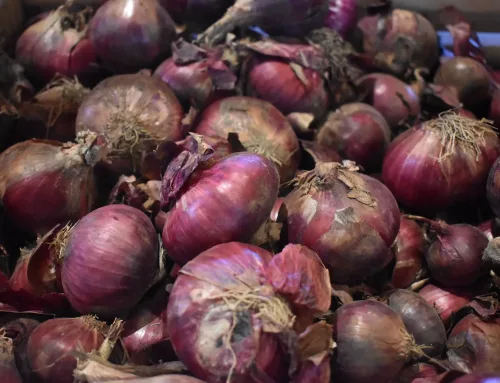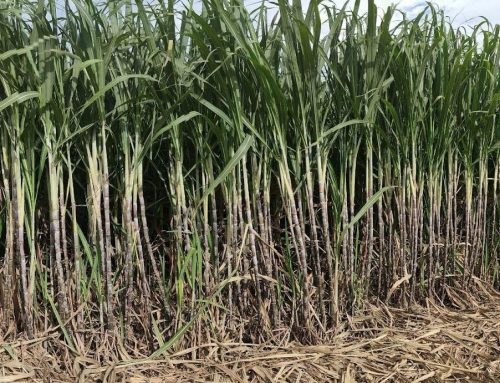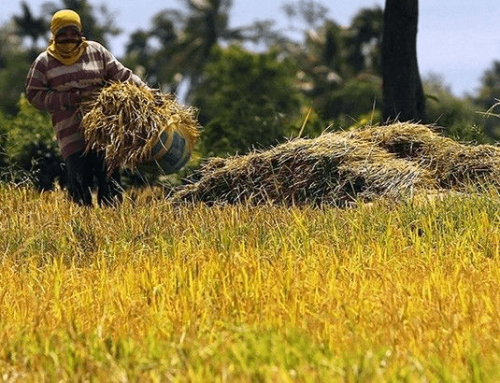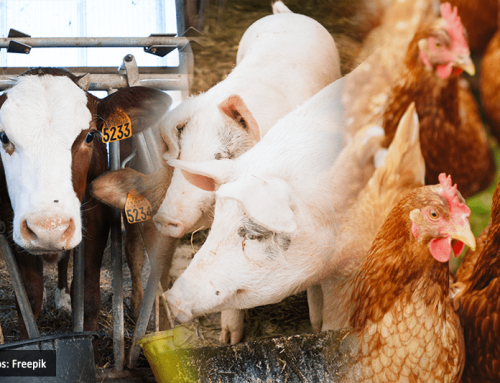In this Article
Explore the factors contributing to the decline in fish supply, the rising fish retail prices, and selected DOST-PCAARRD initiatives designed to enhance local fish production and stabilize the market.
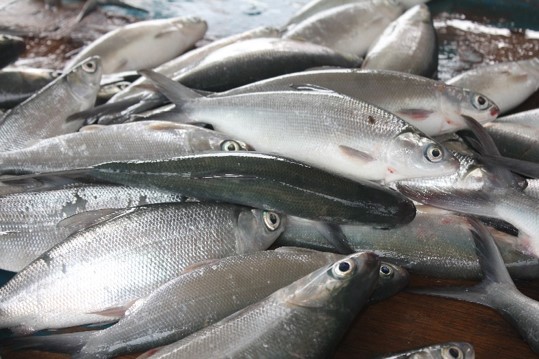
Decline in Fish Unloaded in Regional Ports
The fish supply in the Philippines faced disruptions due to inclement weather and closed fishing seasons. Based on the report of the Philippine Fisheries Development Authority (PFDA) on September 2, 2024, fish unloading volumes in regional fishing ports (RFPs) dropped by 14.17%, falling from 59,259.88 metric tons (MT) in June to 50,862.42 MT in July. Major ports like those in General Santos and Navotas experienced significant declines of 14.95% and 18.48%, respectively. Meanwhile, RFPs in Iloilo and Zamboanga increased by 21.86% and 3.72%, respectively. Despite these fluctuations, RFPs consistently strive to provide their clients and stakeholders with sufficient and fairly priced fishery products.
Table 1. Fish Unloaded Volume in Regional Fishing Ports, June-July, 2024
|
Regional Fishing Port |
Unloaded in June (MT) |
Unloaded in July (MT) |
% Change |
|
General Santos |
29,635.67 |
25,205.76 |
-14.95 |
|
Navotas |
21,792.80 |
17,765.67 |
-18.48 |
|
Lucena |
1,794.20 |
1,793.07 |
-0.06 |
|
Bulan |
2,308.75 |
1,785.20 |
-22.68 |
|
Iloilo |
2,505.30 |
3,053.05 |
21.86 |
|
Zamboanga |
892.71 |
925.995 |
3.73 |
|
TOTAL |
59,259.88 |
50,862.42 |
-14.17 |
Source: PFDA, 2024
On September 13, 2024, Agriculture Secretary Francisco Tiu Laurel Jr. highlighted additional concerns such as overfishing, illegal fishing, and climate change that worsens supply issues. The Philippine Rural Reconstruction Movement (PRRM) also called for increased fish production to meet growing protein demands, especially amid the African Swine Fever (ASF) outbreak affecting pork supply.
Retail Prices of Fish in Metro Manila
On September 13, 2024, the fisherfolk group Pambansang Lakas ng Kilusang Mamamalakaya ng Pilipinas (PAMALAKAYA) observed the rising retail prices of fish in Metro Manila’s public markets. The group reported that prices of bangus, tilapia, and galunggong or round scad have increased by at least Php30 per kilogram (kg) from their usual rates. All three major fish have seen price hikes, with galunggong experiencing the highest range of increase in its retail price, reaching as high as PhP80 per kg.
Table 2. Summary of Per Kilogram Retail Price Movement of Selected Fish in Metro Manila
|
Fish Type |
Regular Retail Price (Php)* |
Price as of September 12 (Php) |
Price Increase (Php/kg) |
|
Galunggong (Round scad) |
180 – 220 |
260 |
40 – 80 |
|
Bangus |
200 |
240 |
40 |
|
Tilapia |
100 – 120 |
150 |
30 – 50 |
Source: PAMALAKAYA Weekly Price Monitoring as cited in the report of Manila Bulletin
*Regular retail price covers the period from September 1-11, 2024
Fish Importation During Closed Fishing Season
On September 3, 2024, the Department of Agriculture (DA) authorized the importation of 30,000 MT of small pelagic fish, particularly frozen galunggong, bigeye scad (matang baka), mackerel, bonito (tulingan), and moonfish (hiwas), to address potential shortages during the upcoming closed fishing season, which runs from October 1, 2024 to December 31, 2024 covering the northeast of Palawan, Visayan Seas, and Zamboanga Peninsula. Agriculture Secretary Francisco Tiu Laurel Jr. issued Special Order (SO) 1272, designating Bureau of Fisheries and Aquatic Resources (BFAR) Officer-in-Charge (OIC) Isidro Velayo Jr. as the approving authority for sanitary and phytosanitary import clearances (SPSICs). The import volume was adjusted from the original request of 35,000 MT, based on recommendations from the National Fisheries and Aquatic Resources Management Council (NFARMC), to ensure adequate supply during the fishing ban while allowing local fish stocks to recover.
This move aims to mitigate the impact of the closed fishing season by filling the supply gap with imported fish. Secretary Laurel noted that the imports are necessary to prevent shortages, given the depletion of local fishing grounds. The DA’s strategy is designed to stabilize the fish supply and support the recovery of domestic fisheries, potentially reducing the need for imports in the future as local conditions improve.
Market Outlook
As the closed fishing season approaches and adverse weather disrupts supply, prices for key fish products are expected to remain high. The importation of the aforementioned small pelagic fish is expected to alleviate some shortages, but it may not fully stabilize fish prices. Consumers should anticipate sustained higher prices, while small-scale fisherfolks might continue to experience financial strain due to the widening gap between farmgate and retail prices.
Selected DOST-PCAARRD Initiatives to Improve Local Fish Production
- Sustainable Production of Bangus Fry in Hatcheries
Government agencies are actively developing innovative solutions to enhance fish production and ensure a stable supply. The Department of Science and Technology-Philippine Council for Agriculture, Aquatic and Natural Resources Research and Development (DOST-PCAARRD) funded the recently completed “Sustainable Bangus Fry Production of ALT Hatchery, Panabo City, Davao del Norte” project under the Collaborative Research and Development to Leverage Philippine Economy (CRADLE) program. Concluding in January 2024, the project was led by Prof. Fredson Huervana of the University of the Philippines Visayas (UPV) in partnership with ALT Fisheries and Aquaventures, Inc.
The project achieved several milestones, notably increasing milkfish fry production by 200% through higher stocking densities compared to traditional hatcheries. The use of algal paste and yeast (Lachancea) resulted in a higher rotifer population, reducing the need for large algal culture tanks. Furthermore, the bioencapsulation of probiotics in rotifers fed to milkfish improved fry growth by 200% and survival rates by 100% while also reducing the Vibrio count in milkfish guts. These innovations significantly enhanced ALT Hatchery’s operations, stabilized the fry supply, and strengthened the local Bangus industry.
- Enhancing Milkfish Fry Production
DOST-PCAARRD funded another project on milkfish fry, “Improvement of Milkfish Larval Rearing and Nursery Culture through Gut Metagenome, Transcriptome Analysis, and Gut Microbial Community Manipulations,” led by Dr. Carmelo Del Castillo of UPV. The project aims to improve milkfish fry survival by studying gut microbiota and developing better rearing protocols. By identifying probiotics, prebiotics, and beneficial compounds, the researchers seek to address deformities and low survival rates in hatchery-produced fry.
The project seeks to reduce the country’s reliance on imports, which currently supply 75% of the milkfish fry supply. It intends to stabilize supply, support milkfish farmers, and strengthen the country’s food security and economic resilience by boosting hatchery productivity and fry quality. The project is expected to be completed in June 2025.
- SPIN Tilapia Strain
DOST-PCAARRD funded a project titled “Field Testing and Performance Evaluation of Saline Tolerant Philippine Tilapia Strain Cultured in Different Geographical Brackish Water Ecosystems,” which is currently being implemented by the University of the Philippines Visayas (UPV) under the leadership of Dr. Rex Ferdinand Traifalgar. This project aims to identify the most suitable strains for different saline conditions, promising improved tilapia quality and production.
The UPV-Saline-Tolerant Population of Improved Nilotica (SPIN) tilapia strain thrives in brackish water, addressing saltwater intrusion challenges. It shows superior growth, reaching 250 grams in 100 days, and supports sustainable aquaculture. Its inability to reproduce in seawater and minimal hybridization with other species reduce environmental risks. With simple fry production and low technical requirements, the technology is accessible to small-scale coastal fishers, ensuring economic benefits. The project is set for completion by November 2024.
All DOST-PCAARRD initiatives are expected to enhance fish supply stability and positively impact market prices. The SPIN Tilapia Strain’s saline tolerance and faster growth will help increase tilapia production in coastal areas, ensuring a stable supply and potentially lowering prices. Likewise, improving milkfish fry production will boost hatchery productivity, stabilize supply, and protect the market from price fluctuations. Together, these projects will strengthen food security and benefit producers and consumers.
References: Cabato, L. (2024, September 4). Chicken, fish production expansion in PH urged amid ASF resurgence. Philippine Inquirer. Retrieved September 17, 2024 from https://business.inquirer.net/477930/group-on-chicken-fish-production-amid-asf
Flores, D.N. (2024, September 13). Government urged to control rising fish prices. Philippine Star. Retrieved September 13, 2024 from https://www.philstar.com/headlines/2024/09/13/2385007/government-urged-control-rising-fish-prices
Pelonia, A. (2024, September 2). Lower fish unloading volume in regional ports. Business Mirror. Retrieved September 17, 2024 from https://businessmirror.com.ph/2024/09/02/lower-fish-unloading-volume-in-regional-ports/
Pelonia, A. (2024, September 3). DA set for importation of 30K MT of small pelagic fish. Business Mirror. Retrieved September 17, 2024 from https://businessmirror.com.ph/2024/09/03/all-set-for-importation-of-30k-mt-of-small-pelagic-fish/
Ramoran, R.B. (2024, February 19). Tilapia Aquaculture to Extend Both in Brackishwaters and Estuarine Environments. DOST-PCAARRD Portal. Retrieved September 17, 2024 from https://www.pcaarrd.dost.gov.ph/index.php/quick-information-dispatch-qid-articles/tilapia-aquaculture-to-extend-both-in-brackishwater-and-estuarine-environments
Ramoran, R.B. (2023, October 26). Project to Aid in Boosting the Supply and Quality of Milkfish Fry through Metagenomics. DOST-PCAARRD Portal. Retrieved September 17, 2024 from https://www.pcaarrd.dost.gov.ph/index.php/quick-information-dispatch-qid-articles/project-to-aid-in-boosting-the-supply-and-quality-of-milkfish-fry-through-metagenomics
Santos, J. (2024, September 13). Fisherfolk group pushes for price control to curb rising cost of retail fish. Manila Bulletin. Retrieved September 13, 2024 from https://mb.com.ph/2024/9/13/fisherfolk-group-pushes-for-price-control-to-curb-rising-cost-of-retail-fish-1#google_vignette
Santos, B.S., Padilla, V.J., Mero, F.F.C., and Mendez, K.V.S. (2023, February 16). Produksyon ng Bangus sa Bansa, Maaring Mapalakas sa Tulong ng bagong Pag-aaral. DOST-PCAARRD Portal. Retrieved September 17, 2024 from https://www.pcaarrd.dost.gov.ph/index.php/quick-information-dispatch-qid-articles/produksyon-ng-bangus-sa-bansa-maaring-mapalakas-sa-tulong-ng-bagong-pag-aaral?highlight=WyJtaWxrZmlzaCJd
Terrado, B.V., Mero, F.F.C., Gahon, S.T., and DOST-PCAARRD S&T Media Services. (2022, April 8). DOST-PCAARRD CRADLE Program Ensures Sustainable Bangus Fry Production in Davao del Norte. DOST-PCAARRD Portal. Retrieved September 17, 2024 from https://pcaarrd.dost.gov.ph/index.php/quick-information-dispatch-qid-articles/dost-pcaarrd-cradle-program-ensures-sustainable-bangus-fry-production-in-davao-del-norte

